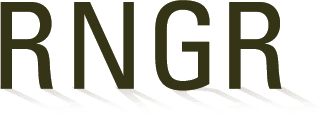Berberidaceae (Mahonia)
Mahonia (repens)
Berberidaceae
Barberry Family
Mahonia
repens
(Lindl.) G. Don
Berberis
repens
Lindl.
Creeping Oregon Grape
MAHREP
Open Lodgepole Forest, West Glacier, Glacier National Park, Flathead County, MT. 1030 meters
M. repens is found from dry foothills to lower montane forest; from eastern Washington south to northeastern California; east of the Cacades and east to Alberta, South Dakota,Texas, New Mexico, Utah and Nevada.
plants
seed
Container (plug)
172 ml conetainers
1 Years
Height: 4 cm
Caliper: 4 mm
Root System: Firm plug in container.
Seeds are collected in early August when fruit turns dark blueto purple. Seeds are brown at maturity. Fruits are hand collected in plastic bags and kept under refrigeration prior to cleaning.
Seeds are cleaned with by maceration using a Dyb-vig seed cleaner at NRCS. Seeds are washed and screened.
Seed longevity is up to 5 years in dry storage.
Seed dormancy is classified as physiological dormancy.
Seeds/Kg: 136,400/kg
% Purity: 100%
% Germination: 55 to 80%
Seeds are placed in a 48 hour water soak. Seeds are put in fine mesh bags and buried in moist peat moss for 2 months at 21C (warm moist stratification) followed by 5 month cold moist stratification at 3C in ventilated containers.
Germination of this species is reported to occur over a several week period and is best at greenhouse temperatures of 13 to 19C.
Greenhouse and Outdoor Nursery
Seeding Method: Direct seeding or planting germinants. Planting germinants is preferable because of the prolonged stratification period. Seed is covered with media.
Growing Media:50% 6:1:1 milled sphagnum peat, perlite, and vermiculite and 50% washed sand containing Osmocote time relase fertilizer at the rate of .25 g and Micromax fertilizer at the rate of 0.20 g per 172 ml conetainer.
Media is kept evenly moist during germination by misting twice per day. Germination continues over a 8 week period and is best under fluctuating temperaures in the outdoor nursery in spring. No germination was obtained at greenhouse temperatures of 22C day/15C night.
8 weeks
Seedlings develop 4 to 6 true leaves at the active growth stage. Seedlings are fertilized with liquid NPK at 100 ppm during the growing season.
8 weeks
Seedlings are fertilized with liquid 10-20-20 NPK at 200 ppm for 2 to 4 weeks prior to outplanting.
2 to 4 weeks
Total Time To Harvest:1 year
Harvest Date:September
Storage: Seedlings are winterized outdoors under insulating foam cover and snow.
5 months
M. repens is a good species for restoration of roadsides, rangelands, and recreation areas. Once established, it is both heat and drought tolerant. Berries are a source of food for many species of birds and mammals and deer and elk browse the foliage in winter. It spreads by rhizomes and layering.
Flora of the Pacific Northwest, Hitchcock and Cronquist, University of Washington Press, 1985.
Seeds: Ecology, Biogeographyand Evolution of Dormancy and Germination, Baskin and Baskin, Academic Press, 1998.
Seeds of the Woody Plants of North America, Young and Young, Timber Press Inc., 1992.
Seed Germination Theeory and Practice, Deno, Penn State University,1991.
Glacier National Park propagation records, unpublished.
Propagation of Pacific Northwest Native Plants, Rose, R., Chachluski,C., and Haase, D., Oregon State University Press, 1998.
Luna, Tara; Wick, Dale; Hosokawa, Joy. 2001. Propagation protocol for production of Container (plug) Mahonia repens (Lindl.) G. Don plants 172 ml conetainers; USDI NPS - Glacier National Park West Glacier, Montana. In: Native Plant Network. URL: https://NativePlantNetwork.org (accessed 2025/08/22). US Department of Agriculture, Forest Service, National Center for Reforestation, Nurseries, and Genetic Resources.





